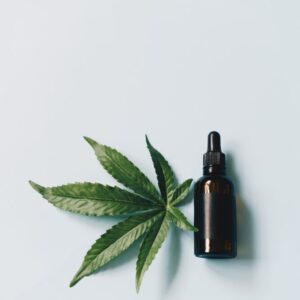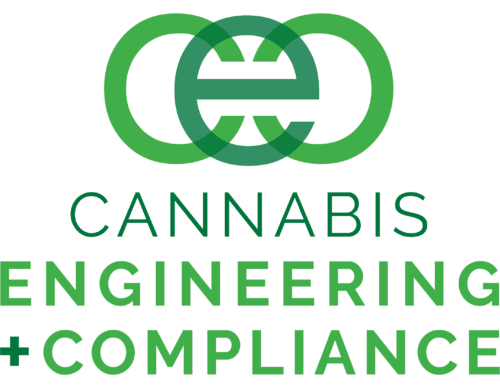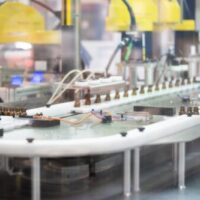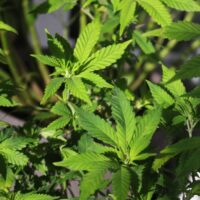C1D1 and C1D2 Concerns in your Cannabis Facility

Cannabis extraction is the process that separates cannabinoids, terpenes, and other desirable compounds in your crop from the plant material. If you are just cultivating and drying your cannabis crop, you won’t need to worry about this. But if you plan to produce extracts like CBD oil, wax, shatter, or sugar, read on. We’ll learn what C1D1 and C1D2 solvents are, how C1D1 and C1D2 solvents are used in cannabis extraction, what other cannabis extraction methods are out there, and how to protect you and your facility when using C1D1 and C1D2 solvents.
What Is C1D1 and C1D2 Cannabis Extraction?
C1D1 and C1D2 cannabis extraction solvents can be effective, but they can also be dangerous. Read on to learn what they are, the difference between C1D1 and C1D2 solvents, and why you would use them.
What are C1D1 and C1D2 Solvents?
If you’re researching cannabis production, you’re going to see the terms C1D1 and C1D2 pop up frequently. CI is Class I (note the Roman numeral I, not a 1), which is a specific designation used by regulatory bodies to govern the use of flammable or explosive gases, vapors, or liquids. They require safety measures beyond basic building codes to minimize dangers to people and property. D1 refers to Division 1, and D2 to Division 2. In your research, you will sometimes see these solvents called C1D1 and C1D2, replacing the Roman numeral I with a 1.
C1D1 vs C1D2 Cannabis Extraction Solvents
The ANSI (American National Standards Institute) designation CI (commonly spelled C1) covers the solvents, while the Division (D) designation pertains to their use. D1 covers processes where “ignitable concentrations of flammable gases or vapors frequently exist,” or D2, where these gases are “present but contained except in accidental rupture or abnormal operations.” For example, a D2 designation might refer to a closed system, where processing and reclamation are in a piping system that is not exposed at any point during its process. Permitting and electrical listings for a D2 system is simpler because there is considerably less risk. A D1 system, where your solvents are exposed and thus open to sparks or potentially dangerous temperature variations have more complicated safety requirements, and lower allowable quantities.
Why Use C1D1 and C1D2 Solvents?
Cannabis Extraction with C1D1 & C1D2 Chemical Processes
Many cannabis producers choose C1D1 or C1D2 cannabis extraction methods, but there are a lot of considerations to think about when making this decision.
Meeting Codes & Regulations for C1D1 and C1D2 Extraction
These codes apply directly to any extraction process using volatile solvents as defined by the code, and can be a major barrier to gaining occupancy permits. It is absolutely critical that owners have certified equipment and required ventilation, alarms, and life safety systems implemented in their facilities. Cannabis extraction facilities are closely monitored in all states. The correct classification as to C1D1 or C1D2 is critical to ensure the safety measures are in place.
Additionally, NFPA (National Fire Protection Association) has their own electrical classification for motors, using Class I and Group A, B, C, and D, depending on what ignitable/flammable vapor you’re dealing with.
List of solvents in Class 1
This list covers all extraction solvents in Class 1. The C1D1 and C1D2 solvents that are commonly used in cannabis processing are in bold type.
| Group | Extraction Solvents |
|---|---|
| Group A | Acetylene |
| Group B | Hydrogen, fuel and combustible process gases containing more than 30% hydrogen by volume or gases of equivalent hazard such as butadiene, ethylene, oxide, propylene oxide and acrolein. |
| Group C | Carbon monoxide, ether, hydrogen sulfide, morpholine, cyclopropane, ethyl and ethylene or gases of equivalent hazard. |
| Group D | Gasoline, acetone, ammonia, benzene, butane, cyclopropane, ethanol, hexane, heptane, methanol, methane, vinyl chloride, natural gas, naphtha, propane , or gases of equivalent hazard. |
Mixing Solvents in Cannabis Extraction
We hear a lot about producers experimenting with mixes of solvents. They’ve found some combinations that increase throughput, which is great. But that kind of experimentation can also be very dangerous and can change all the requirements of your space. If you decide to modify your extraction process, you need to keep applicable codes and life safety considerations in mind. You can find out more in our blog on cannabis extraction solvents.
Read on to learn what other cannabis extraction methods exist and how to keep yourself safe no matter what extraction method or combination thereof you use.
Solventless, Non-Solvent, Solvent-Free, and C1D1 & C1D2 Cannabis Extraction
Nervous about C1D1 and C1D2 solvent cannabis extraction? Let’s take a break from Class I solvents and dive into some other extraction methods out there. Each method of cannabis extraction comes with different yield, cost, and safety considerations.
Solventless or Non-Solvent Cannabis Extraction
Solventless or non-solvent products are those produced through mechanical extraction such as heat, which refers to the process of creating concentrates without the use of chemical agents. Some jurisdictions also consider water-based extraction as solventless. This method is often used by small home extractors, as it has a low cost and is very safe. Commercial processors may find it useful if they wish to offer a high-end, boutique product to consumers who prefer an organic product and are willing to pay for it. It is significantly more expensive to produce this product, as the yields from mechanical processing are much lower than yields from solvent-based extractions. Producers can approach this decision with a detailed market analysis of their target consumers and how much they are willing to spend for a premium product with the perception of being “clean and green.” These are usually referred to as solventless or non-solvent products.
Solvent-Free Cannabis Extraction
Solvent-free is used to describe chemically extracted products that have been distilled in a lab to remove any trace of solvent residue. The end product is virtually indistinguishable from solventless product, because they are both very clean, it is only the process that is different. And for the cannabis producer, the process makes a big difference in the cost-basis of your end products.
Water & Ice Bubble Hash Extraction
If you want to take a product to market that is solvent-based for a higher yield while still marketable as clean and green, you might consider using water and ice as your solvent, which results in a product called bubble hash. The options for cannabis processing come in a dizzying variety, and there are more being developed every year as more states legalize cannabis. Subscribe to our newsletter to stay up to date on the options available.
C1D1 and C1D2 Extraction
In the end, a majority of growers choose solvent-based extraction using a solvent that comes under the CI heading, as that is generally the most economically viable way to produce consistent extracts and concentrates.
Cannabis Facility Life Safety Equipment
If, like the majority of growers, you land on C1D1 and C1D2 extraction, keep life safety in mind to protect you and your facility. And even though other extraction methods can be less dangerous, it’s important to take life safety precautions with all cannabis extraction methods.
While there are national standards for cannabis facility safety, there are also state and local codes, and a cannabis extraction facility design that passed muster in one county might need adjustments to pass through permitting in the next county over. You should pay special attention to the local rules that govern your location. That said, there is a host of safety equipment that can help protect you and your facility AND get you through permitting if you choose to use C1D1 and C1D2 solvents.
-
- Fire suppression system: from sprinklers to chemical extinguishers to fans that remove oxygen from specific areas, there is a variety to choose from. Your processes will determine which options will work for you.
- Monitoring devices: you’ll need to track vapors/air quality with sniffers, keep track of temperatures that may indicate dangerous situations, use cameras to ensure safety protocols are strictly followed, and more.
- Shut off valves/flame arrestors: these cut off gas supplies to prevent fuel from flooding into an area if it detects a dangerous temperature.
- Wiring/Electrical: some components will need to be covered to prevent sparks that could cause fires or explosions.
Security: make sure only trained, qualified staff are allowed in processing areas, and that there are electronic records of who is in the buildings. Certain door locks may be required.
How CE+C Engineers work with C1D1 and C1D2 Extraction Processes
So, you’ve researched C1D1 and C1D2 solvent extraction, learned about other extraction methods out there, and landed on C1D1 solvents as your extraction method of choice. Interested in moving forward? We can help you safely implement C1D1 and C1D2 extraction solvents in your facility.
CE+C’s engineers are self-described code nerds. They read codes for fun and have an in-depth understanding of how the regulations play out in the real world. They will work with you to establish the required safety features needed for your equipment or help you understand the pros and cons of the equipment and solvent options you’re considering. They will also advise you about which equipment needs to be isolated, how your substances must be stored, and other considerations that may even affect the construction of your building shell and the rooms inside. They will help you with facility upgrades, ensuring your production stays top-of-the-line. Finally, they will design life safety systems that will pass inspection by your local Fire Marshal.
The bottom line is that expert guidance will get you through permitting and to production with the right equipment and a facility that produces product and revenue.
Would you feel better having experts in your corner? Give us a call at 206.385.3417.



